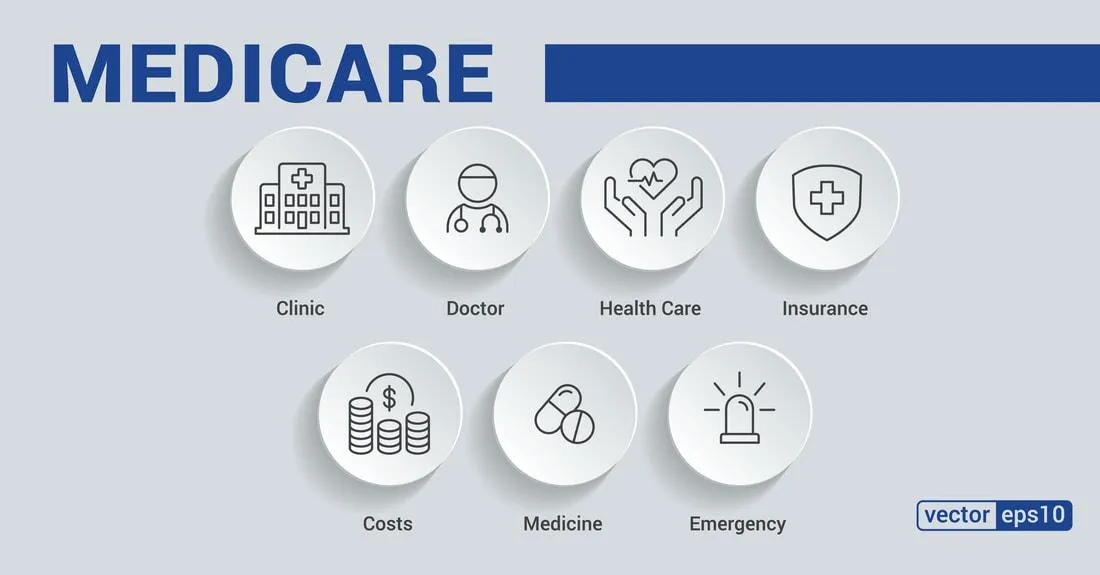What is Medicare?
Key Points
Enrollment in Medicare Part A and Part B is handled through the Social Security Administration, while additional parts and plans—such as Medicare Advantage, Part D, and supplemental coverage—are obtained through private insurance companies.
Medicare is a federally managed health insurance program primarily for individuals aged 65 and older, as well as those under 65 who have qualifying disabilities or medical conditions.
It provides coverage for a wide range of medically necessary services, preventive care, and other essential healthcare benefits.

Feeling lost? You are not alone.
What is Medicare? How does it work? What does it actually cover—and is it considered insurance?
These are important questions, and while the system can seem complex, you’re in the right place to get clear, straightforward answers.
Medicare is a federal health insurance program in the United States, primarily serving individuals aged 65 and older. It also provides coverage for certain individuals under 65 with qualifying disabilities or end-stage renal disease (ESRD).
The program is divided into multiple parts, each responsible for different areas of healthcare coverage. Understanding how these parts work together is key to navigating Medicare with confidence.

What is Medicare Part A and what does Part A Cover?
Part A is considered hospital insurance. It helps cover the costs of inpatient care, including hospital stays, skilled nursing facility care, hospice services, and some home health care. Think of it as coverage for room and board during a hospital stay, including the cost of a semi-private room.
However, it’s important to understand that Part A does not cover everything that happens in a hospital. For example, outpatient procedures—such as same-day surgeries—typically fall under Part B, not Part A.
For most people, Part A comes at no cost starting at age 65. This is because they’ve paid Medicare taxes throughout their working years, effectively pre-funding their hospital benefits.
Even if you haven’t worked enough to qualify on your own, you may still receive premium-free Part A based on a spouse’s or ex-spouse’s work history. If not, it’s still available for purchase—though a monthly premium will apply.
What is Medicare Part B?
Part B covers outpatient medical services—essentially everything outside of inpatient hospital care. Without Part B, you would not be insured for essential services like doctor visits (even those received in a hospital), lab tests, preventive care, ambulance transportation, and outpatient procedures.
Importantly, Part B also covers high-cost treatments such as cancer therapy and kidney dialysis, which could otherwise result in overwhelming out-of-pocket expenses without proper coverage and a supplemental plan.
The cost of Part B is set by the Social Security Administration and is subject to change each year. Premiums are income-based—individuals with higher incomes pay more than those with lower incomes. Your modified adjusted gross income, as reported to the IRS, determines your monthly Part B premium.
What is Medicare Part C?
Part C, also known as Medicare Advantage, is a private insurance alternative to Original Medicare.
These plans are offered by approved insurance companies and can vary in cost depending on the provider, your county of residence, and the specific plan you choose.
To enroll in a Medicare Advantage (Part C) plan, you must first be enrolled in both Part A and Part B. Even if a Part C plan advertises a low or $0 premium, you are still responsible for paying your Part B premium. Additionally, you must live within the plan’s service area and apply during an eligible enrollment period.
Once enrolled, your Medicare benefits are administered by the Advantage plan—not the federal government.
Unlike Parts A and B, enrollment in Part C is not handled by Social Security because it is an optional, private-market choice. Many people choose to stick with Original Medicare and pair it with a Medigap policy and a Part D drug plan instead of enrolling in an Advantage plan.
Ultimately, whether you choose a Part C plan or stay with Original Medicare and supplemental coverage is a personal decision based on your healthcare needs and preferences.
What is Medicare Part D?
Medicare Part D is the most recent addition to the national Medicare program, created to provide prescription drug coverage for individuals aged 65 and older. For the first fifty years of Medicare’s existence, there was no coverage for outpatient prescription medications. That changed in 2006, when the federal government introduced Part D, allowing millions of beneficiaries to gain access to affordable prescription drug coverage.
Part D covers retail prescription medications—those you pick up at a pharmacy or receive via mail order. To enroll, you choose an insurance provider and sign up for one of their specific drug plans. Most states offer around 30 different plans, each with varying formularies, premiums, and pharmacy networks.
The best way to find a plan that meets your specific needs is to work with a licensed agent who can run a Part D analysis using Medicare’s official prescription drug finder tool. This ensures you select the plan that offers the best coverage for your current medications.

What is Medicare vs Medicaid?
A frequently asked question in this context is, "How does Medicare distinguish itself from Medicaid?"
To clarify, Medicare is a health insurance program designed for the elderly, while Medicaid serves as financial and/or healthcare assistance for individuals with low income. Certain individuals aged 65 and older may be eligible for both programs, with Medicare taking precedence as the primary coverage and Medicaid serving as secondary.
The government offers various Savings Programs that can be applied for through your state's Medicaid office. These programs may assist in covering Part B premiums and provide support for drug plans. To determine your eligibility, consult with your state's Medicaid office.
What doesn't Medicare cover?
This is an excellent inquiry, as numerous individuals may not be aware that Medicare does not extend coverage to every health-related expense beneficiaries may encounter.
Medicare excludes coverage for:
Long-term care
Plastic and/or cosmetic surgery
Massage therapy
Routine dental care
Routine vision care
Medical care outside of the U.S.
Hearing aids
Dentures
Key Takeaways
The Medicare program consists of four distinct parts: Part A, B, C, and D. Part C, D, and Medigap plans are available through private insurance carriers rather than the federal government.
Upon enrolling in Medicare Part A and Part B, you have two primary plan choices: you can opt for a Medigap plan along with a Part D plan, or you can choose an Advantage plan
Tessa Crider Insurance - Get FREE Assistance
If Medicare feels confusing, you don’t have to figure it out alone. Our friendly, knowledgeable agents are here to guide you every step of the way—making the process simple and stress-free.
We start with the basics, helping you understand your Original Medicare coverage. This foundation is key to finding the supplemental plan that fits your needs, especially if you’re new to Medicare.
Once your policy is in place, you’ll have peace of mind knowing we’re just a phone call away whenever you need help or have questions.
Best of all—our services are completely free. Experience the difference of having Tessa Crider Insurance on your side. Call (386) 288-2753 or click the button below to get started:

